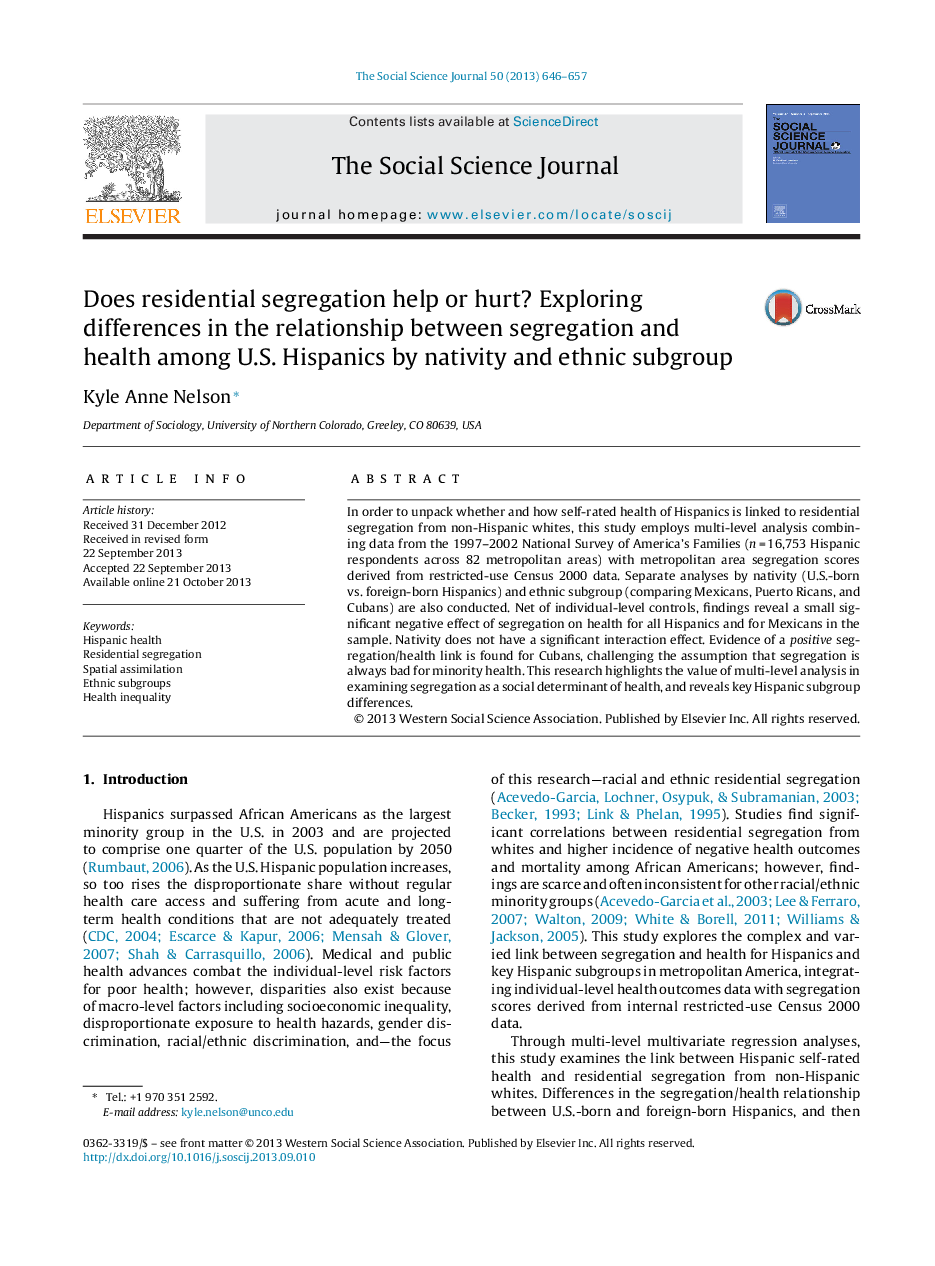| کد مقاله | کد نشریه | سال انتشار | مقاله انگلیسی | نسخه تمام متن |
|---|---|---|---|---|
| 140164 | 162670 | 2013 | 12 صفحه PDF | دانلود رایگان |

• Analysis of health and segregation for Hispanics, by nativity and ethnic subgroup.
• Negative effect on self-rated health of residential segregation for Hispanics.
• Nativity does not appear to have a significant interaction effect.
• Mexicans experience negative effects; Cubans experience positive effects.
• Consistent with assimilation theory, compositional factors influence health more.
In order to unpack whether and how self-rated health of Hispanics is linked to residential segregation from non-Hispanic whites, this study employs multi-level analysis combining data from the 1997–2002 National Survey of America's Families (n = 16,753 Hispanic respondents across 82 metropolitan areas) with metropolitan area segregation scores derived from restricted-use Census 2000 data. Separate analyses by nativity (U.S.-born vs. foreign-born Hispanics) and ethnic subgroup (comparing Mexicans, Puerto Ricans, and Cubans) are also conducted. Net of individual-level controls, findings reveal a small significant negative effect of segregation on health for all Hispanics and for Mexicans in the sample. Nativity does not have a significant interaction effect. Evidence of a positive segregation/health link is found for Cubans, challenging the assumption that segregation is always bad for minority health. This research highlights the value of multi-level analysis in examining segregation as a social determinant of health, and reveals key Hispanic subgroup differences.
Journal: The Social Science Journal - Volume 50, Issue 4, December 2013, Pages 646–657